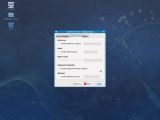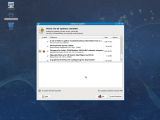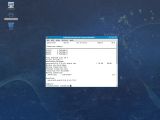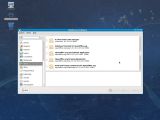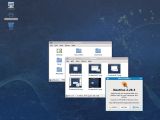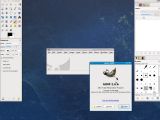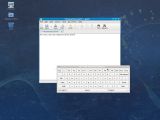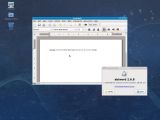Four days ago, on June 9th, Fedora fans once again rejoiced as their favorite operating system reached a new version. Fedora 11, or Leonidas, is available for 32 and 64 processor architectures on single Live CD formats or Install DVDs. Of course, both KDE and GNOME users will be able to choose Fedora 11 with one of these two desktop environments. Moreover, for a truly lightweight system, Xfce spins can also be downloaded from the official website.
As usual, take a moment to go through our test machine's hardware specifications:
- GigaByte GA-8IP900 Motherboard
- Intel Pentium 4 @ 2.4 GhZ Processor
- Nvidia GeForce FX5500 Video Card
- 1024 MB of RAM
- LG CD-RW/DVD-ROM Drive
- 19" Samsung Syncmaster 913v Monitor
For our First Look we decided to go with the "main" GNOME edition and see if Fedora 11 lived up to the expectations. From the plethora of worldwide mirrors we chose one that was close to us and the 688 MB download was over in no time. Booting the Live environment was fairly quick; once everything's loaded you will almost forget that you're running Fedora 11 from the CD, as the desktop is very responsive. But, for the full experience, you will obviously want to install it to the hard drive by double clicking the corresponding icon on the desktop.
Fedora 11 gives you multiple installation options: either use existing partitions, wipe everything and use the entire disk, or install the system side by side with one that's already on the HDD. I chose to use the entire drive and, after Fedora 11 finished setting up the partitions (which, by the way, were EXT4-formatted by default), the installation started. Five minutes later the process was completed and, honestly, this has to be the fastest operating system I've installed in a long time.
The boot time was also significantly improved, so Leonidas won't lag behind the competition. I was expecting a gorgeous animated ribbon to replace the ugly three colored loading bar from Fedora 10, but unfortunately, on our test computer, only the KDE version displayed it. I even re-downloaded the ISO and tried again but to no avail. Maybe this will be addressed in a future update.
Before reaching the desktop, I had to type in my credentials – root password, username and user password. The final step will ask you to submit your hardware profile information to the Fedora team, which I highly recommend, as this will help a lot with bugfixing and future development. The first thing you will notice is, of course, the new wallpaper – dark blue, wavy lines and a flock of birds are its highlights; all in all, there's nothing not to like about it. Unfortunately, the theme is exactly the same as in Fedora 10. It doesn't look bad, but it's definitely getting old fast.
Being pampered with the easiness of enabling proprietary video drivers in Ubuntu and Mandriva, I was also expecting the same from Leonidas. Well, it's still not the case. Fedora 11 does come with the exciting Nouveau open-source driver but it's yet to have 3D support so you'll want to install the official Nvidia one. For that, you will have to enable the RPM Fusion repositories through a terminal command executed as root. There is also the graphical alternative of downloading two RPMs and installing them instead. Once that's out of the way, you will have access to not only the graphics driver, but to a lot of multimedia codecs, including MP3, MPEG or Xvid.
The next obvious step after successfully installing the Nvidia driver was too enable some cool effects. Sadly, Fedora 11 doesn't come with the Compiz Settings Manager out of the box and the only settings you can modify are wobbly windows and the 3D Desktop Cube.
Seeing Mandriva finally switch to the "browser" mode in the Nautilus file manager, I was almost certain that Fedora 11 will follow. Well, it didn't and I truly can't find one good reason for them sticking to the old, totally inefficient way of navigating directories. Though I quickly went to the Edit --> Preferences menu and configured the behavior the way I liked, surely new users will not know how to do that without asking around on forums and such.
On the included applications front, you should know that, as in previous releases, OpenOffice.org is missing. Instead, Abiword will do a pretty good job for basic word processing tasks, being also able to save in a lot of popular formats, including .doc and .docx. But, as expected, the great package manager gives you access to a lot of extra software, including the latest 3.1.0 version of the popular office productivity suite. Multi-protocol instant messaging is available through Pidgin 2.5.5 and a quite useful virtual keyboard is in the form of Indic On Screen Keyboard. GIMP 2.6.6 is still around and the Transmission BitTorrent Client is at version 1.5.3.
But what about the most popular open-source browser? Well, Fedora 11 apparently wanted to be ahead of the pack and included Firefox 3.5 Beta by default. It's a great update, no doubt about it, but there will be some users who will complain about possible stability issues and the lack of compatibility with some extensions. The Mozilla Thunderbird email client was also updated to its latest 3 version, it too in a Beta state. The bright side is that Fedora 11 users will probably be the first to have these two applications updated to their final versions once they are available.
The Update Manager received a pretty exciting feature called Presto that decreases update download times by a lot. How does it work? When an update becomes available for a certain program, instead of downloading the whole package again Presto will only download the new bits and apply them to the existing version. Beware though, as this is not enabled by default and you will have to download and install the Presto plugin through a simple terminal command: yum install yum-presto.
Say you have an MP3 file but you don't have the codec for it installed; provided you already enabled the RPM Fusion non-free repositories, Rhythmbox will ask if you want to install the necessary codec in order to play the file. This nifty new feature is called Automatic Fonts & MIME Installer and will work in all kinds of other scenarios, including video playback or documents that need additional fonts.
Lastly, while typing my password at the login screen I noticed a new icon: a hand with its index finger highlighted, a sign that logging in by using fingerprint readers is now possible. Though I couldn't test it myself, the developers promise it will work with many models of such devices.
As a conclusion, I have to say that I was expecting more from this release. Surely, it is a great operating system overall, but there are a few minor annoyances that will probably keep new users away. If you are a fan, go ahead and upgrade, there's no reason to stick with Fedora 10. A faster boot, the Automatic Fonts & MIME Installer or the Yum Presto plugin may be enough incentives to give Leonidas a spin.
Download Fedora 11 right now from
Torrent.
Fedora 11 DVD (torrent) i386 | Fedora 11 CDs (torrent) i386 | Fedora 11 Live KDE (torrent) i686 | Fedora 11 Live GNOME (torrent) i686 | Fedora 11 Sources DVD (torrent) | Fedora 11 Live KDE (torrent) x86_64 | Fedora 11 Live GNOME (torrent) x86_64 | Fedora 11 CDs (torrent) PPC | Fedora 11 DVD (torrent) PPC | Fedora 11 DVD (torrent) x86_64 | Fedora 11 CDs (torrent) x86_64



